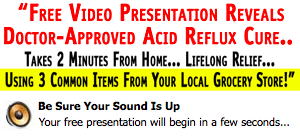June 7, 2011
Hypertrophic Gastritis
Hypertrophic gastritis is a pre-malignant condition. As a pre-malignant condition, a person may find a way to overcome the possibility of a more serious condition developing if he follows a proper course of action. Whether or not the condition develops into something more serious does not always depend on the patient’s genetics and how close a more serious condition is to developing.
The disease starts with increased folds in the stomach and increased mucus secreted from the stomach lining. A few physical symptoms may include constipation or diarrhea, depending on the internal chemistry of the individual. If the diseases progresses further, acid reflux may occur with all of the other possible symptoms.
When a medical professional diagnoses a patient with this condition in the early stages, the patient can easily take steps to avoid the condition from becoming a more serious problem. The first thing a person can do, if he has not done so already, is to cut down on foods he eats that irritate the stomach lining. This includes sodas, coffees, milks and any other foods to which his particular body chemistry does not respond well. Because the condition occurs before something goes wrong, changing a person’s habits in time can prevent a person from needed more stringent medical services.
A brief cleansing diet, as long as it is performed under the supervision of a doctor, may help the stomach folds to return to their normal consistency. If the condition is not caught soon enough, there is little the patient of the doctor can do but wait to see what it develops into. Because the condition occurs in the internal organs, there is little a person can do about it. The stomach, unlike the heart, is not a muscle, exercise does not help gastritis directly. If the condition is an immune response, exercise may help.
For more information on the hypertrophic gastritis visit refluxremedy.com today!
Filed under Gastric Reflux, Gastritis, Gastritis Diet, Gastro Reflux, Gastroesophageal Reflux, Gastrointestinal Disease by admin
March 16, 2011
GERD Treatment
Gastro-esophageal acid reflux or GERD for short can be treated with a traditional Westernized medical angle using the chemical approach or you can use a treatment with more of a holistically angle using a nutritional approach.
 According to guidelines established by the American College of gastroenterology, GERD is defined as “symptoms or mucosal damage produced by the abnormal reflux of gastric contents into the esophagus”.
According to guidelines established by the American College of gastroenterology, GERD is defined as “symptoms or mucosal damage produced by the abnormal reflux of gastric contents into the esophagus”.
In searching for the right GERD treatment or cure it’s important you not get confused by elusive medical lingo. Simply put GERD is your heartburn gone wild. What was a simple case of acid indigestion has been allowed to inflame into a bad case of burned throat tissue.
Thanks to television programming, direct-to-consumer advertising and mass media propaganda millions of people end up using treatment that turn their heartburn into GERD.
If millions of people were addressing the root cause of their acid indigestion and heartburn in the first place, instead of popping antacids, then you and millions of others wouldn’t be even asking what GERD treatment they should use.
Why? Because there wouldn’t be any GERD and if there were they would be rare cases. GERD treatment is a huge business that sells antacid products, proton pump inhibitor chemicals and ultimately surgery and the maintenance products for that.
Your heartburn was never intended to lead you down a sales funnel of gimmicks and gadgetry . . . GERD treatment is a product made by the medical industry that you want to avoid at all costs.
GERD treatment is a gateway for laparoscopic or fundoplication surgery as a protocol to help you avoid the inevitable throat cancer you’re likely to get if you continue to just use GERD treatments to cover symptoms.
Before you even buy another bottle of antacids or fill that GERD treatment prescription for Proton Pump Inhibitor chemicals (PPIs), do yourself a favor, find a physician that is willing to give you a stomach acid test.
One of the biggest scams of GERD treatment is selling people on chemically blocking stomach acid production, when in fact their GERD symptoms are from a lack of stomach acid.
Don’t just take my word for it, look into it yourself. What I found is GERD treatment leads to acid rebound, which is a chemical dependency on PPIs . . .
Whenever you use a treatment, whether for GERD or acid reflux, whatever it is, keep in mind that treatment is only blocking symptoms . . . the root cause of your GERD is still there.
That’s why the nutritional approach is a smart avenue to look into before falling into the GERD treatment trap.
You were born to heal,
Todd M. Faass
Health Advocate
Filed under Gastroesophageal Reflux by admin
March 11, 2011
Symptoms of Gastroesophageal Reflux Disease
When the lower portion of the esophagus, referred to as the lower esophageal sphincter (LES), relaxes at inappropriate times, this may prompt stomach acid, digestive juices and food particles to irregularly backup into the esophagus. A LES that frequently opens and does not close tightly increases the opportunity for Gastroesophageal Reflux Disease or GERD to arise.
People that suffer from frequent heartburn, more than twice a week, are often unaware that they may be affected by GERD. As stomach acid seeps into your esophagus, this causes heartburn, the primary symptom of GERD. The occurrence of heartburn or acid reflux induces a burning sensation at the chest area that is irritating and painful. This sensation is usually followed by burping and hiccupping. Chronic heartburn may signal that GERD has developed.
Stomach acid or food that has traveled through the esophagus and entered into the oral cavity may be defined as regurgitation, another symptom of GERD. Producing a foul odor and bitter taste, this symptom can be unpleasant. Regurgitation forces acidic exposure in the mouth, which burns and tingles. Consistent regurgitation can become embarrassing in social settings.
Dysphagia is frequently associated with GERD. Difficulty swallowing solid and liquid foods is a sign of dysphagia . This creates an uncomfortable feeling while eating. Dyspepsia happens as a result of GERD and encompasses several ailments that include abdominal pain and nausea.
Habitual and lifestyle triggers of GERD:
- Consuming large meals promotes stomach pressure and causes the onset of acid indigestion.
- Eating less than two hours before bed can cause acid buildup.
- Vitamins and Medications: Using non-steroidal anti-inflammatory drugs (NSAIDs) such as ibuprofen and naproxen, may aggravate GERD. Calcium, iron and potassium usage can also increase risk.
- Smoking exponentially enlarges the risk of GERD because this activity weakens the muscular capability of the LES and reduces the secretion of saliva, which counterbalances acid.
- Alcohol consumption worsens GERD symptoms due to the relaxing effect on the LES.
- Diet plays a massive role in GERD. Fatty and acidic foods are the biggest contributors to GERD. People are affected differently by certain foods. Common foods that promote GERD symptoms include garlic, caffeine and citrus.
- Hormone Replacement Therapy treatment can increase the likelihood of GERD symptoms in postmenopausal women.
Health conditions are linked to GERD.
- GERD may be hereditary. Many people are genetically predisposed to GERD and inherit physical problems that enhance everyday risk.
- Hiatal Hernia symptoms are similar to that of heartburn and take place when the stomach shifts and protrudes through the diaphragm.
- People with respiratory diseases like asthma are susceptible to GERD.
- Laryngitis, Sinusitis and chronic cough are also associated with GERD.
- Health Factors like obesity, pregnancy and diabetes increase vulnerability to GERD symptoms.
- Those suffering from GERD may worsen other pre-existing diseases and conditions.
Gastroesophageal Reflux Disease can be very painful and debilitating. These common symptoms can guide you when trying to detect GERD. For additional information on gastro reflux symptoms, please visit refluxremedy.com and learn more about GERD.
Filed under Gastroesophageal Reflux, Gastrointestinal Disease by admin
February 28, 2011
Gastroesophageal Reflux Disorder
It is unnatural for stomach contents to rise into the esophagus but unfortunately, this happens to many people. This occurrence is called acid reflux, when stomach acids are permitted to enter the esophagus and move upward. When acid reflux occurs repeatedly, this could be a sign that you have gastroesophageal reflux disorder.
Gastroesophageal reflux disorder is what develops when the lower esophageal sphincter is relaxed and does not close consistently or tightly. The LES acts as a passageway for foods that have been eaten, allowing entrance into the stomach. Although the LES musts open to allow foods to pass to the stomach, a properly functioning LES should close immediately after the food goes to the stomach, and prevent stomach acids from being displaced. Stomach acid is corrosive but is suitable for the lining walls of that organ. In order to breakdown and digest food, the gastric acid in your stomach must be highly acidic. When gastric acid moves into the esophagus it ends up corroding the esophagus, causing irritation and inflammation.
Many factors can cause you to suffer from gastroesophageal reflux disorder. If you have a haital hernia this could make you more susceptible to GERD. A hiatal hernia occurs when the top portion of the stomach and the LES muscle shift above the diaphragm, the muscle that divides the chest and stomach. The diaphragm normally aids the LES in it’s function to separate stomach acid from the esophagus. Hiatal hernias allow gastric acids to go from the stomach to the esophagus easily.
If you are pregnant this may affect your chances of having GERD. Pregnant women should be concerned about GERD because of their increased risk. As the baby develops in the womb, the body must make room. This means that vital organs begin to shift and are compressed. If the stomach shifts or compresses too much, this could force stomach acids to move past the LES and into the esophagus.
Obesity and diabetes also contribute to GERD. If you have a lot of extra weight, especially near the abdomen, this can put excessive pressure on the stomach and diaphragm. If the stomach endures pressure, this makes it easier for stomach acids to escape into the esophagus and cause damage. Diabetes affects the way that foods are digested and could encourage acid reflux. Close attention should be paid to your diet and exercise habits, as they can contribute to obesity and diabetes.
Smoking is a lifestyle contributor to GERD. Each time you smoke, the LES becomes weaker and has to work harder to remain closed. A weakened or relaxed LES will allow stomach acid to seep into the esophagus. The more you smoke, the higher your risk is of developing GERD.
Symptoms of GERD in adults include heartburn, chest pain, chronic cough, regurgitation and difficulty swallowing. Children however may not have heartburn but will likely have a persistent cough and respiratory problems. Avoiding certain foods, smoking, maintaining a healthy weight, and eating smaller lean meals well before lying down for bed are simple ways to manage GERD.
To learn more about gastroesophageal reflux disorder, visit refluxremedy.com today.
Filed under Acid Reflux, Gastroesophageal Reflux by admin






